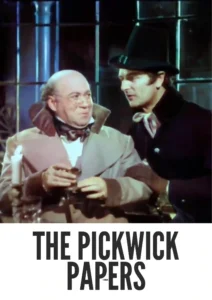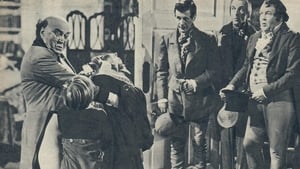Video Sources 0 Views
- The Pickwick Papers 1952 Colorized


Synopsis
Table of Contents
Toggle
Embark on a journey through 19th-century England with The Pickwick Papers, a delightful British comedy from 1952, now exquisitely colorized to bring a fresh vibrancy to this timeless tale. Starring James Hayter as the jovial Samuel Pickwick, this film adaptation of Charles Dickens’ beloved novel offers a heartwarming and humorous exploration of friendship, adventure, and the eccentricities of human nature. Perfect for both Dickens aficionados and newcomers alike, this HD download presents a cherished piece of literary history in a visually stunning format.
The Pickwick Papers follows the escapades of Samuel Pickwick, the founder and perpetual president of the Pickwick Club, and his fellow Pickwickians: Mr. Nathaniel Winkle, Mr. Augustus Snodgrass, and Mr. Tracy Tupman. The club members embark on a series of travels and misadventures across the English countryside, chronicling their observations and experiences.
Their journey leads them through bustling towns, quaint villages, and encounters with a colorful cast of characters, including the wily cockney servant Sam Weller, who becomes Pickwick’s loyal companion and confidant. Along the way, they find themselves embroiled in comical misunderstandings, legal entanglements, and romantic escapades. From a farcical breach-of-promise lawsuit to an accidental imprisonment, the Pickwickians face every challenge with unwavering optimism and good humor. Ultimately, The Pickwick Papers celebrates the enduring power of friendship, the joy of discovery, and the inherent goodness of humanity.
The film boasts a stellar cast of British actors who perfectly embody the characters of Dickens’ novel:
-
James Hayter as Samuel Pickwick
-
James Donald as Nathaniel Winkle
-
Nigel Patrick as Mr. Jingle
-
Joyce Grenfell as Mrs. Bardell
-
Donald Wolfit as Serjeant Buzfuz
The Pickwick Papers falls squarely into the genre of British comedy, with strong elements of social satire and heartwarming drama. Its episodic structure and colorful characters make it a quintessential example of Dickensian storytelling brought to life on the screen.
Released in 1952, The Pickwick Papers reflects the optimism and cultural renaissance of post-war Britain. As an adaptation of a classic novel, the film exemplifies the tradition of bringing literary masterpieces to a wider audience through cinema. While staying true to the spirit of Dickens’ work, the film also showcases the distinctive style and sensibilities of British filmmaking during this era. The Pickwick Papers stands as a testament to the enduring appeal of classic literature and the power of adaptation to introduce new generations to timeless stories.
This colorized version of The Pickwick Papers has been meticulously restored, employing advanced digital techniques to enrich the visual experience while preserving the film’s original charm. The colorization process involved a thorough analysis of the original black and white footage, with careful attention given to historical accuracy and artistic integrity. Through sophisticated algorithms and expert artistry, appropriate colors were assigned to each scene, enhancing the costumes, settings, and overall atmosphere of the film. This painstaking process breathes new life into the characters and their world, making the story more engaging and accessible for contemporary viewers. While debates about colorizing classic films persist, this enhanced version of The Pickwick Papers serves as a bridge between cinematic history and modern audiences, ensuring the film’s continued appreciation for years to come.
-
: Noel Langley
-
: Noel Langley
-
: The Pickwick Papers by Charles Dickens
-
: Wilkie Cooper
-
: Ralph Kemplen
-
: Renown Pictures Corporation
-
: Renown Pictures Corporation
-
: 109 minutes
-
: MP4
-
: HD (1080p)
-
: Compatible with various devices, including smartphones, tablets, computers, and smart TVs.
The Pickwick Papers (1952) was a major success upon its release, both critically and commercially, praised for its faithful adaptation of Dickens’ novel and its delightful performances. The film is remembered as a quintessential British comedy that captures the heart and humor of the original story. As a beloved classic of British cinema, The Pickwick Papers continues to entertain and uplift audiences with its timeless charm and enduring appeal.
-
: What is The Pickwick Papers about?
-
A: The Pickwick Papers is a comedy that follows the adventures of Samuel Pickwick and his friends as they travel across England.
-
-
: Is this version of The Pickwick Papers colorized?
-
A: Yes, this version has been professionally colorized to enhance the viewing experience.
-
-
: What makes The Pickwick Papers a classic?
-
A: Its faithful adaptation of Dickens’ novel, charming characters, and heartwarming humor.
-
-
: What is the download format?
-
A: The download format is MP4, compatible with most devices.
-
-
: What resolution is the download?
-
A: The resolution is HD (1080p)
-
Experience The Pickwick Papers Today!











